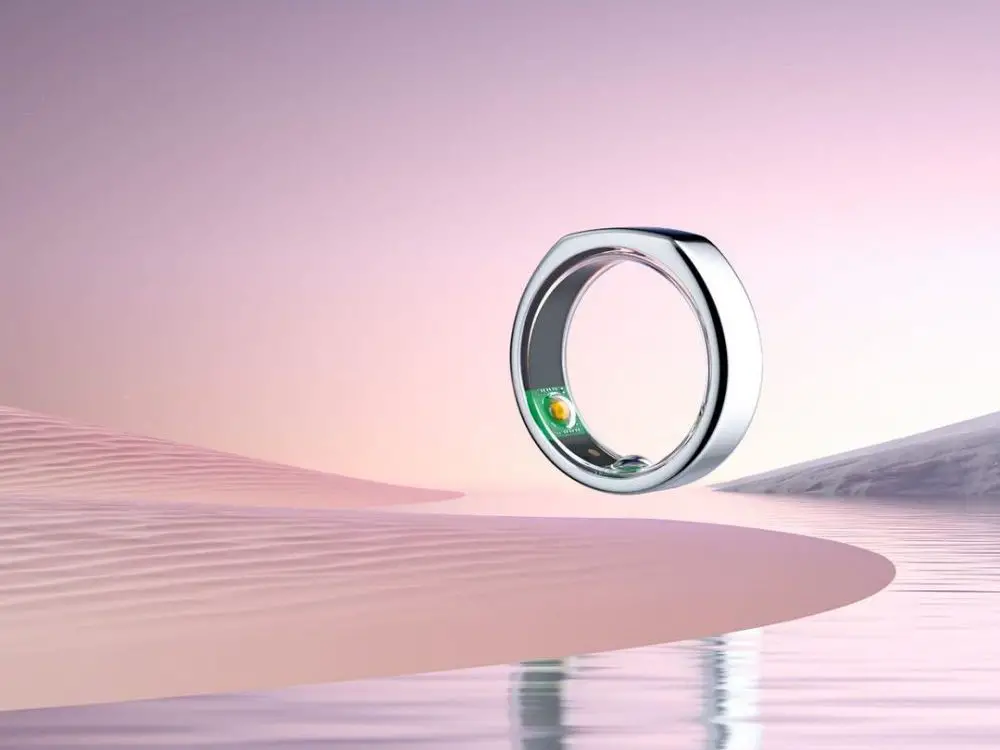Spotted on the fingers of (former) royal Prince Harry and in the Instagram stories of Kim Kardashian, Oura is a rising wearable tech brand that has courted the affluent.
Oura is a wearable health tracker, but what sets it apart is that it is worn on the finger. Unlike its wearable tech competitors like Fitbit or the Apple watch, the ring is small and not as invasive. Built-in sensors on the inside of the ring record data such as heart rate and body temperature to build reports in the categories of readiness, sleep and activity. The readiness score is a read on your body’s predicted ability to take on high levels of activity, such as working out; it is based on the question, “How are you balancing your activity, inactivity, and rest?” and is determined by analyzing your daily movement and how much rest you’re getting.
To report on rest, the ring analyzes “your deep sleep, REM sleep, light sleep, nightly heart rate, bedtime schedule, and more.” The sensors are so accurate that some claim that the ring can sense symptoms of illness early on. A study from the University of California reported that for 38 of its 50 participants, fever was identified by the ring when symptoms were unreported or even unnoticed, and indications from respiratory and heart patterns were also recorded. Most recently, Oura’s ability to detect pregnancy early on has attracted attention.
Oura can also better hold a charge when compared to similar products. There is no doubt that battery life is important for wearable tech, as it sets a standard for practicality and wearability. And, after all, the more data it can gather, the better. From a single charge, one can get 4-7 days from the Gen 3 Ring, and the company has added specifics to the Gen 2 ring to improve battery life.
Oura is, arguably, one of the best pieces of wearable health tech that’s on the market right now. This is thanks to its advanced sensors as well as a battery capacity comparable to bulkier tech. Not only that, but it has a more holistic approach to health. Unlike its wearable tech counterparts, it doesn’t only track activity. Rather, it tracks life in relation to activity. So why doesn’t everyone have it? Just like a lot of new health-related tech products, Oura isn’t affordable. Models across three iterations of the ring sell for $299 or a hundred dollars more if you want it in gold or “stealth” matte black. Not only that, but for the newest model, on top of the price of the ring itself, you’ll have to pay a monthly $6 subscription fee to use its partner app. The company has reasoned that this helps them develop new and improved features on the app, like meditation and stories to help you sleep.
Although there is no particular name for the niche that companies like Oura occupy, there is no doubt that it is for a more affluent audience. For those in a regular tax bracket, their products become more of a symbol of the desired lifestyle. Similar health brands have popped up in recent years, and Oura follows on the tails of companies like Peloton and Goop. Oura may not be as sensational as Goop (namely, this candle that made headlines), but it is following in the steps of Peloton to try and get consumers to believe in not only the product but the lifestyle it promises. In fact, Oura recently onboarded one of Peloton’s major players, Karina Kogan. Kogan joined Peloton ahead of the company going public and was then promoted to the company’s global head of product marketing in 2019.
Oura has established itself as a company for the rich. Celebrities like Kim Kardashian and Gwyneth Paltrow have exchanged Instagram stories on their Oura stats (free of charge), and the company has recently picked up Odell Beckham Jr. as a brand ambassador. There certainly is some appeal in being able to spend $300 on a fancy piece of technology in the name of health, and the commodification of health technology is nothing new. Its price manages to generate exclusivity through its inaccessibility, which helps build out its branding — and its exclusivity is exactly what brands like Oura aim for.
However, the problem that Oura will face, much like Peloton, is the exclusivity of the brand — which could lead to consumers’ burning out on the company. While Peloton accesses a different part of the fitness and health technology niche, Oura can learn from the company. Both are technology companies that overlap with the health and fitness industry and are currently riding a wave created by the pandemic. Peloton, once considered a “pandemic darling,” has laid off 20% of its workforce. Not only that, but its CEO and founder, John Foley, has recently stepped down.
For now, though, Oura is seeing major funding and investing. There seem to be no new numbers, but as of mid-2021, the company had raised $148 million in funding. At the time, it also just surpassed its 500,000th sale.
As reviews of the Oura and funding seem to be going well, there is no doubt that we’ll see more of the company in the coming years. Keep an eye on the news tab and your Instagram stories.

















